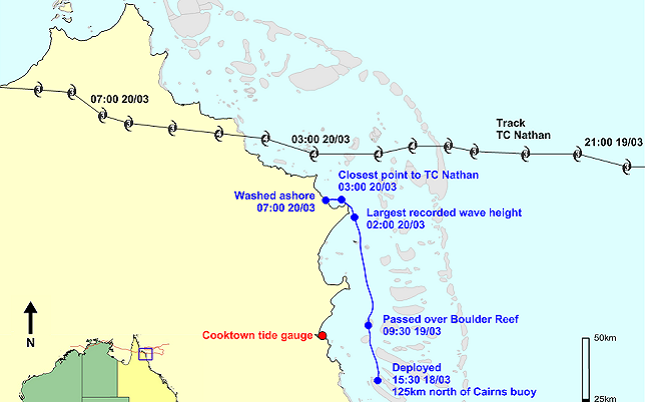← Back
Monitoring cyclonic waves

One of the consequences of climate change is that the intensity and frequency of severe weather events such as tropical cyclones is predicted to change into the future. Of particular concern to coastal communities in Queensland, Australia is that the intensity of tropical cyclones is forecast to increase by 2 to 11 % by the year 2100 (Knutson T.R. et al, 2010). In order to model and forecast the impacts of severe tropical cyclones on coastal communities, the physical parameters of typical cyclones and their associated influence on local water levels and wave height must be determined. Miniaturized buoys, deployed in the event of a storm, can be a valuable tool for doing so, as Daryl Metters, John Ryan and Grant Millar of the Coastal Impacts Unit (DSITI) demonstrated during the 2015 Tropical Cyclone Nathan.
Learn more:
Follow us on:



